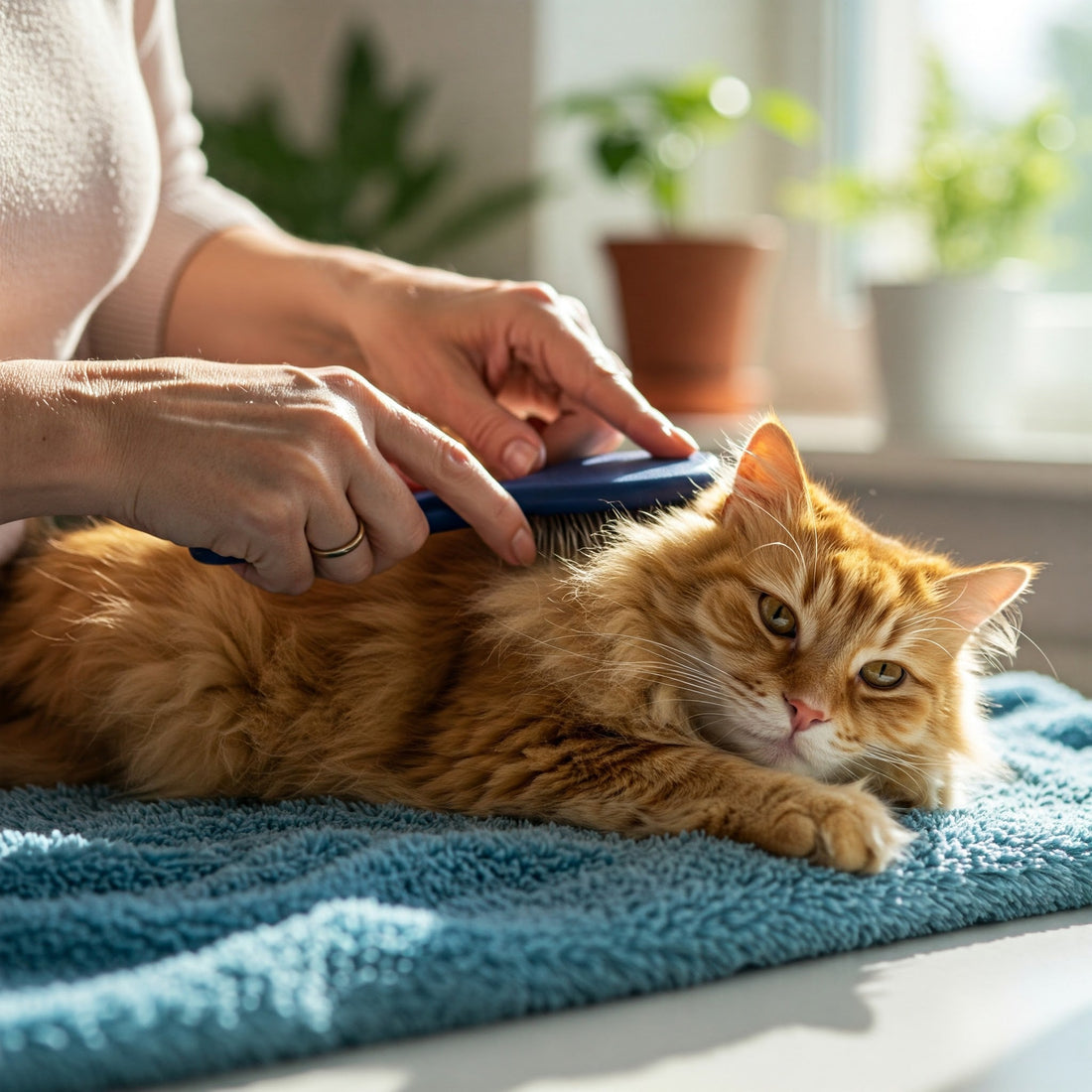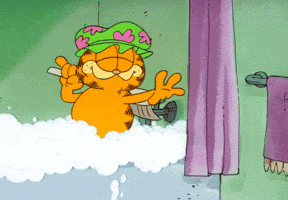
Seasonal Grooming Guide: Adjusting Your Cat's Grooming Routine Throughout the Year
Share
A cat's coat serves as both a barometer and a battleground in the ever-shifting war against the elements. As temperatures rise and fall, humidity levels fluctuate, and daylight hours wax and wane, the feline body responds with physiological changes that demand corresponding adjustments in grooming care. What many owners mistake as a static maintenance routine actually requires seasonal fine-tuning—an intimate dance between nature's rhythms and the attentive care that domestic life provides. The astute cat guardian recognizes these subtle shifts and adapts their approach accordingly, transforming grooming from a mundane chore into a harmonious collaboration with their cat's biological wisdom.

Is Your Cat’s Grooming Routine in Sync with the Seasons?
Winter's chill initiates the first major transition in a cat's coat cycle. As daylight diminishes, photoperiodic responses trigger many cats—particularly those with access to outdoor temperatures—to develop thicker undercoats. This luxurious winter fur provides essential insulation but also creates ideal conditions for mat formation near the skin where guard hairs and dense undercoat intertwine. Indoor cats experience less dramatic changes due to climate-controlled environments, yet even they retain evolutionary responses that thicken their coats to some degree. This season demands vigilant detangling work, particularly along friction zones like the armpits, belly, and hindquarters where movement encourages knot development. The grooming tools themselves may need upgrading—a wider-toothed comb for long-haired breeds to navigate the plush undercoat without breakage, or a slicker brush with slightly longer pins to reach through dense fur. Bathing becomes a rare necessity during winter months unless the cat encounters outdoor elements; when required, quick spot cleans with warm water and rapid drying prevent dangerous chilling. Perhaps most critically, winter grooming sessions should incorporate thorough paw inspections to remove ice melt residues or tiny ice balls that form between toe pads—chemical burns and frostbite risks hiding in plain sight.
Spring's arrival unleashes the great molt, a phenomenon that transforms homes into landscapes of floating fur. As daylight increases, cats shed their winter coats with an urgency that often overwhelms their self-grooming capabilities. This seasonal shedding differs fundamentally from year-round hair loss—it's a concentrated biological event requiring intervention to prevent hairballs and skin irritation. The grooming arsenal expands during this period: rubber curry brushes excel at lifting loose undercoat, while deshedding tools with precise blade spacing remove dead hair without damaging the new coat coming in beneath. Bathing (for cats who tolerate it) can accelerate the shedding process when combined with high-velocity drying that literally blows out loose fur. Even cats who typically resist brushing often welcome more frequent sessions during peak shedding, as the relief from itchy, detaching hair outweighs their usual objections. This season also presents the ideal window for introducing new grooming tools or routines, as the cat's physical discomfort makes them more receptive to assistance. The diligent owner tracks shedding patterns across their cat's body—uneven hair loss or persistent bald patches may signal underlying health issues masked by the natural molt.

Summer brings its own grooming paradoxes. While cats naturally shed excess fur to stay cool, the remaining coat still requires protection from sun damage—particularly in light-colored or thinly-furred areas like ears and noses where sunburn risks mimic those in humans. Grooming shifts focus toward skin health: regular brushing distributes natural oils that protect against dryness from air conditioning, while careful inspection reveals early signs of flea activity or hot spots. The frequency of wiping down with damp cloths increases to remove pollen and environmental allergens that cling to fur and get ingested during grooming. Paw care intensifies as well—outdoor adventurers may need protective balms to prevent burns from hot pavement, while indoor cats benefit from gentle cleansing to remove dust and debris. For cats who enjoy water, shallow "paw pool" play sessions provide cooling evaporation while encouraging self-grooming behaviors. Perhaps most importantly, summer demands heightened vigilance for signs of overheating during grooming sessions—panting, drooling, or lethargy indicating the need for immediate cessation and cooling measures.
Autumn serves as nature's reset button, preparing the coat for winter's return. The second annual shed—often less dramatic than spring's—still requires attentive brushing to remove the lighter summer coat and make way for incoming winter growth. This transitional period offers the perfect opportunity for deep coat maintenance: thorough detangling, inspection for early mats, and strategic trimming of problem areas (like long fur around the hindquarters) before winter's bulk makes access difficult. Skin care takes precedence as indoor heating begins drying the air; omega-3 supplements or topical moisturizers may be introduced to combat flakiness. Nail care frequency often increases during autumn as cats spend more time indoors on softer surfaces that don't naturally wear down claws. The season also marks an ideal time for full grooming assessments—evaluating changes in coat texture that might indicate nutritional deficiencies, or noting decreased flexibility that suggests arthritis may require grooming tool adaptations.
Beyond these broad seasonal shifts, micro-adjustments account for regional climate variations. Coastal dwellers might combat salt spray and humidity with more frequent gentle rinses, while desert residents focus on UV protection and hydration-supporting grooming products. Urban cats encounter pollution residues requiring special cleansing attention, whereas rural felines contend with plant matter like burrs or sap needing careful removal. The truly seasonally-attuned owner even accounts for holiday-specific hazards—Halloween glitter, Christmas tree sap, or Fourth of July firework debris that demand immediate grooming interventions.

The tools themselves undergo seasonal rotation in the thoughtful household. Winter may call for heated grooming pads to relax stiff muscles during brushing sessions, while summer favors cooling mats that make grooming more tolerable. Brush bristle materials might change from boar hair in humid months to anti-static options when indoor heating dries the air. Even the location of grooming shifts—cozy by the fireplace in January, perhaps near an open screened window when spring breezes carry away loose fur.
Senior cats and kittens experience these seasonal transitions differently, demanding further customization. Older cats may need help regulating their body temperature as their coat changes—additional brushing in spring to compensate for less efficient self-grooming, or light sweater protection after autumn shaves for medical procedures. Kittens experience their first seasonal sheds as profound transformations, often requiring extra reassurance and gentler tools as their baby coat gives way to adult fur.
The psychological dimension of seasonal grooming proves equally vital. The increased daylight of spring and summer often makes cats more receptive to extended grooming sessions, while winter's darkness may necessitate shorter, more comforting interactions. Pheromone sprays keyed to seasonal stressors (like holiday commotion) can be incorporated into grooming routines to maintain calm. Even treat selection might rotate seasonally—warming bone broth licks in winter, hydrating cucumber treats in summer—to create positive grooming associations year-round.

Ultimately, seasonal grooming transcends mere maintenance; it becomes an ongoing conversation with a cat's biological needs, a way to honor their wild heritage while supporting their domestic life. The careful observer notes how their cat's coat changes not just in appearance but in scent—the dusty aroma of summer fur differing from the dense musk of winter wool. They recognize the subtle shifts in grooming preferences—a sudden desire for more cheek rubs during spring shedding, or increased tolerance for belly brushing when autumn coats come in. This attunement creates not just a healthier cat, but a deeper bond—one that acknowledges and respects the ancient, unbroken rhythm of seasons flowing through every strand of fur.
